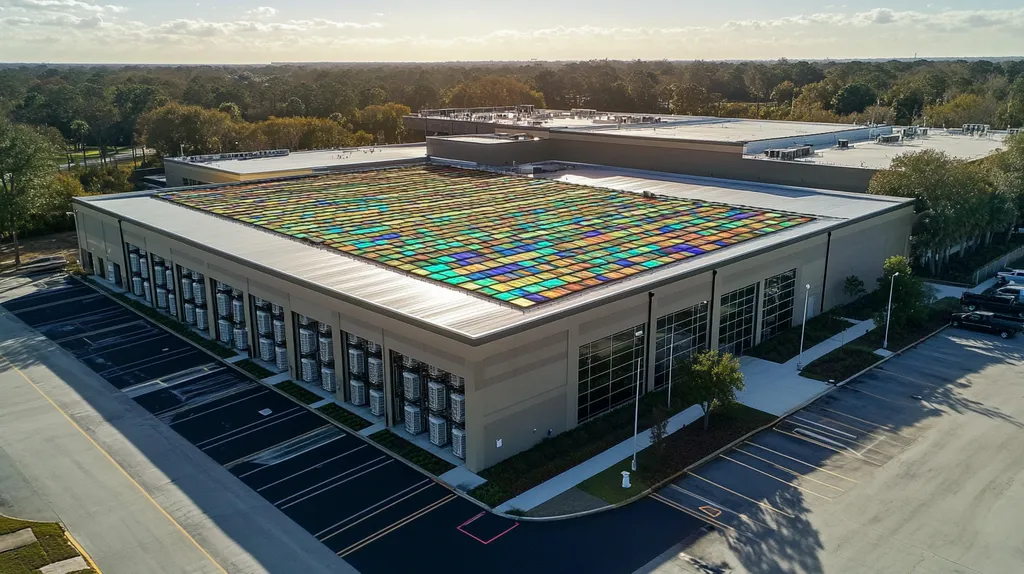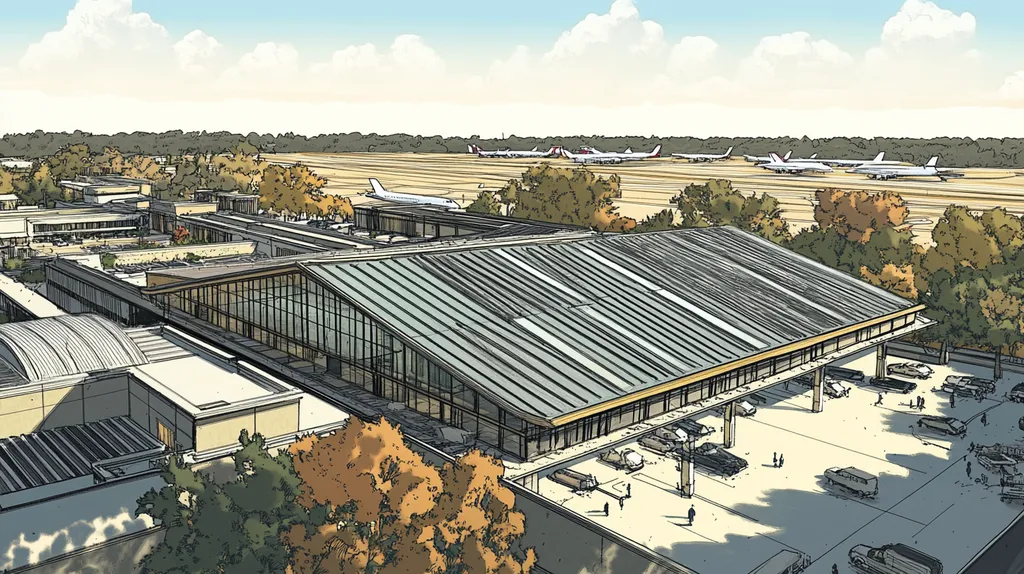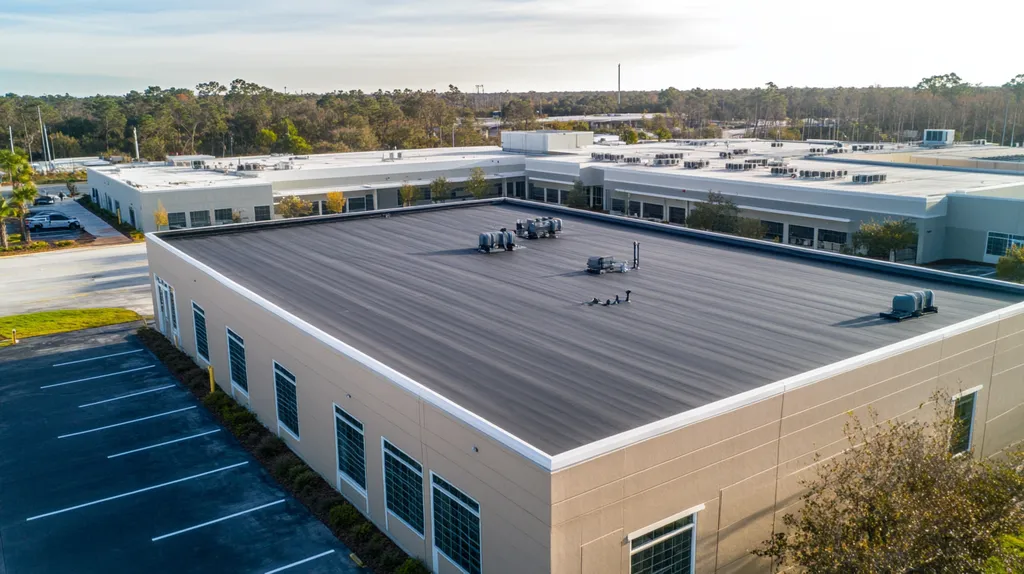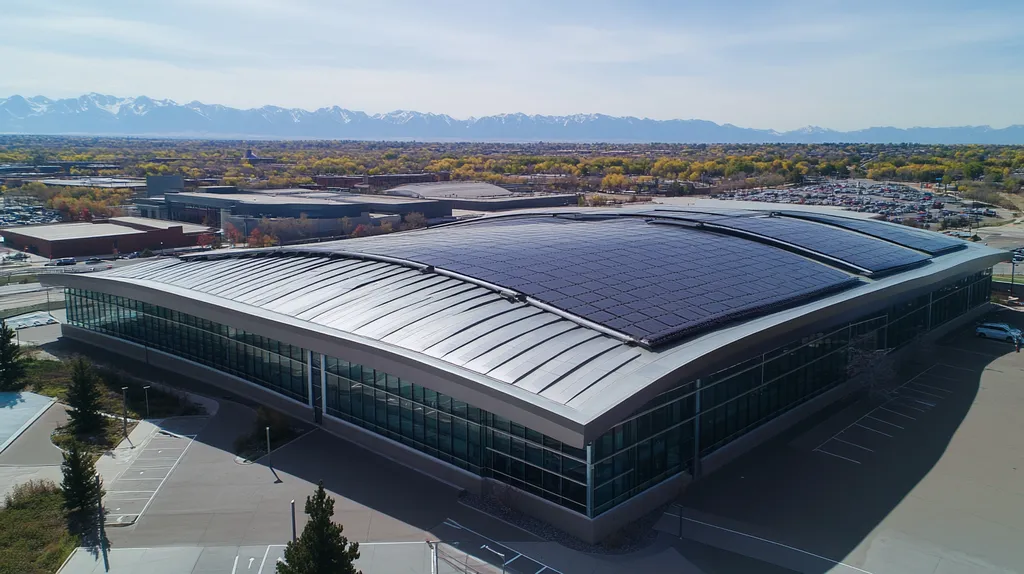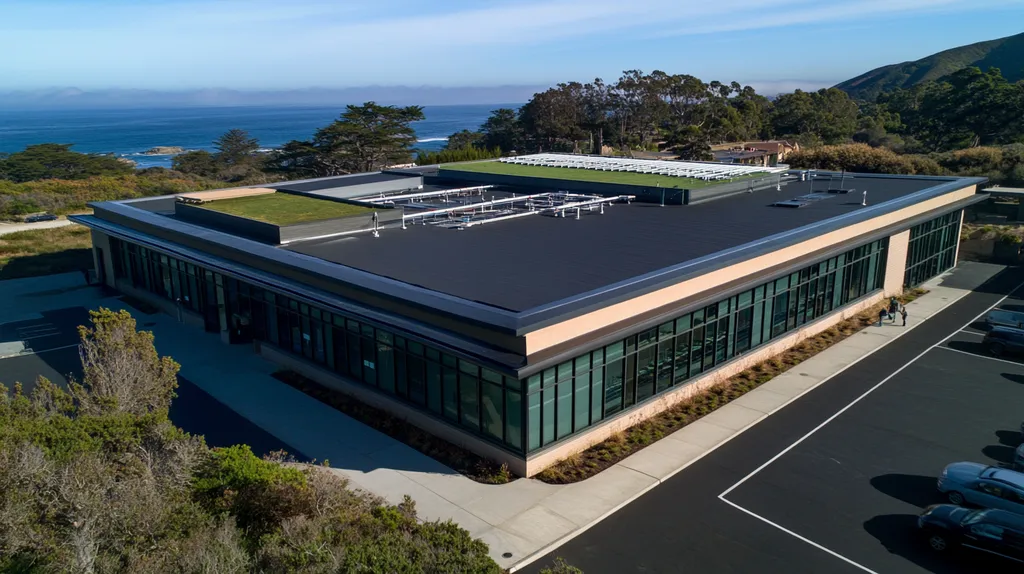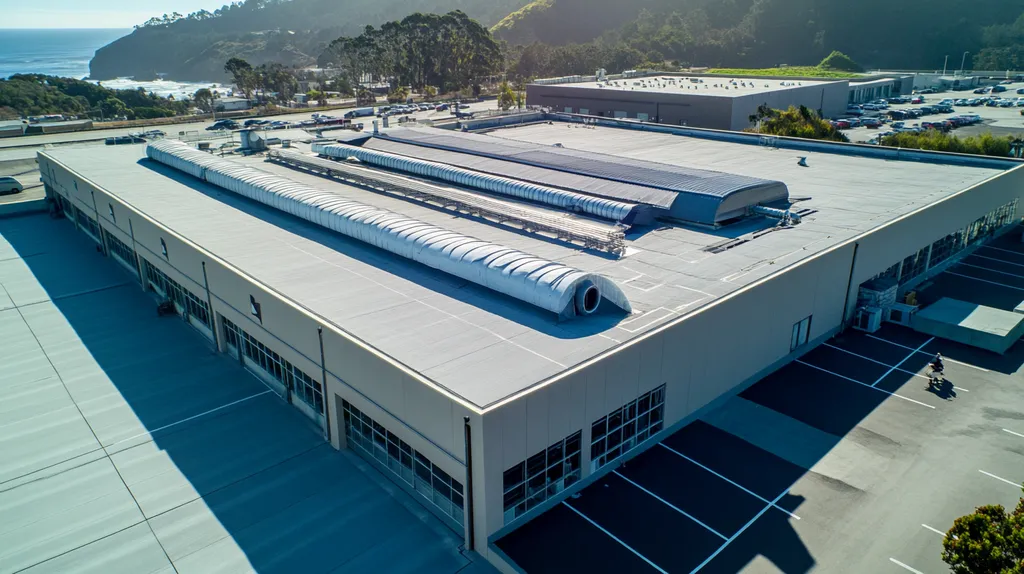In an industry where a single warranty dispute can cost facility managers hundreds of thousands in unexpected repairs, commercial roof coverage remains dangerously misunderstood. Recent surveys reveal that 73% of building owners misinterpret their warranty terms, leading to denied claims and budget-destroying emergency expenses.
From material-only protections masquerading as comprehensive coverage to maintenance requirements buried in fine print, the commercial roofing warranty landscape is riddled with expensive pitfalls.
This analysis exposes the most damaging warranty myths while providing evidence-based strategies for protecting your roofing investment through proper documentation, maintenance compliance, and strategic coverage selection.
SECTION 1: COMMON MISCONCEPTIONS
Let’s face reality – the commercial roofing warranty landscape is a minefield of misunderstandings that cost building owners millions annually in unexpected repairs. Industry surveys reveal that 73% of facility managers misinterpret their warranty coverage, leading to denied claims and budget-busting expenses. These misconceptions aren’t just costly – they’re creating a false sense of security that leaves buildings vulnerable and owners exposed.
All Warranties Cover Leaks Indefinitely
Here’s a shocker: That “lifetime” warranty probably isn’t. Most NDL (No Dollar Limit) warranties provide comprehensive coverage for material failure and workmanship errors, but they’re far from eternal. (source: RoofCrafters)
Even the most robust warranties typically max out at 20-30 years, with plenty of fine print about what constitutes a “covered leak.” Many exclude damage from standing water, improper maintenance, or unauthorized repairs.
Want to hear something truly terrifying? Some warranties only cover the materials themselves, leaving you holding the bag for labor costs that often exceed the material expense by 300%.
The real kicker? Most warranties require regular documented maintenance to remain valid. Miss a few inspection reports, and that premium coverage you paid for evaporates faster than morning dew on a hot roof.
Manufacturer Guarantees Replace Contractor Workmanship
Think that shiny manufacturer’s warranty means you’re covered for installation mistakes? Think again. Most material warranties explicitly exclude problems caused by improper installation – which, coincidentally, accounts for about 90% of early roof failures.
When manufacturers do offer workmanship coverage, it typically requires installation by their certified contractors. Even then, the coverage often has more escape clauses than a magician’s contract.
The harsh truth? Manufacturer warranties are designed to protect the manufacturer first, the contractor second, and the building owner last. They’re written by lawyers who get paid to find creative ways to say “not covered.”
Smart facility managers understand that a manufacturer’s warranty is just one piece of the protection puzzle. Without separate workmanship coverage from your contractor, you’re only halfway protected.
Warranty Terms Are Standard Industry-Wide
If you believe all commercial roof warranties are created equal, I’ve got a bridge in Brooklyn to sell you. The reality is that warranty terms vary wildly between manufacturers, contractors, and even specific projects.
Some warranties cover removal and replacement of failed materials, while others only provide replacement materials. The difference in coverage can mean tens of thousands of dollars out of your pocket.
Coverage periods aren’t standardized either. One manufacturer’s 20-year warranty might offer better protection than another’s 30-year warranty. It’s not the length that matters – it’s the fine print.
The most dangerous assumption? That “industry standard” warranties actually exist. Each manufacturer and contractor crafts their terms to match their risk tolerance and market position, making comparison shopping essential but extremely challenging.
SECTION 2: PRACTICAL IMPLICATIONS
Here’s a sobering statistic: 62% of commercial roof warranties get voided before they even hit the halfway mark of their coverage period. Why? Because building owners are stumbling into warranty-killing pitfalls faster than a squirrel on a hot tar roof. The financial impact is staggering – we’re talking about repair bills that can exceed six figures when warranty claims get denied. Let’s dive into the three most expensive warranty traps that are emptying building owners’ bank accounts.
Voided Coverage Due to Unapproved Maintenance Practices
Want to see a warranty administrator’s eyes light up? Tell them you’ve been power-washing your membrane roof or letting the HVAC guy use roof cement for quick fixes. These seemingly innocent maintenance shortcuts are warranty killers.
Every manufacturer specifies approved cleaning methods, repair materials, and maintenance schedules. Deviate from these requirements, and you might as well set your warranty on fire.
CertainTeed’s warranty options, for instance, require all work to be performed by authorized contractors to maintain coverage. (source: CertainTeed)
The most insidious part? Many building owners don’t discover their maintenance practices have voided their warranty until they file a claim – and by then, it’s too late.
Unauthorized Repairs Triggering Warranty Disputes
Picture this: A small leak appears. Your maintenance team grabs some roofing material from the local hardware store and patches it. Congratulations – you’ve just torpedoed your warranty coverage.
Even minor repairs must follow manufacturer specifications and be performed by approved contractors. That $200 DIY fix could end up costing you $20,000 when the warranty administrator discovers unauthorized work.
The worst offenders? Emergency repairs made during off-hours without proper documentation or approval. These panic-driven fixes almost always come back to haunt building owners during claim reviews.
Smart facility managers establish clear protocols for emergency situations and keep their warranty administrator’s contact information on speed dial.
Hidden Exclusions in Material-Only Protections
Material warranties are like democracy – the devil’s in the details. These warranties often create a false sense of security while excluding the most common causes of roof failure.
Think your material warranty covers wind damage? Better check the wind speed limitations. Many cap out at speeds lower than your area’s typical storms. Water damage? Only if it wasn’t caused by ponding, which coincidentally is how most water damage occurs.
The exclusions list in most material warranties reads longer than a pharmaceutical warning label. Damage from foot traffic, chemical exposure, or unauthorized equipment installation? All common exclusions that catch owners off guard.
The real kicker comes when owners discover that their “comprehensive” material warranty doesn’t cover the labor costs to replace failed materials – often 70% of the total repair expense.
SECTION 3: COST OF MISINFORMATION
Let’s talk money – specifically, the astronomical sums building owners hemorrhage due to warranty confusion. Industry data shows commercial properties lose an average of $3.75 per square foot annually from preventable warranty-related issues. For a typical 50,000-square-foot roof, that’s $187,500 going down the drain faster than rainwater through a compromised membrane.
Undetected Installation Errors Accelerating System Failure
Here’s a nightmare scenario playing out daily: installers rush through critical details, assuming the warranty will cover any issues. Except those “minor” oversights in flashing or membrane overlap are turning five-year-old roofs into Swiss cheese.
Most catastrophic failures start with installation errors so subtle they don’t show up until year three or four. By then, moisture has been secretly wreaking havoc on insulation and deck materials, multiplying repair costs by factors of ten.
The real gut punch? Many of these installation errors fall into warranty coverage gray areas. That professionally installed roof system might actually be a ticking time bomb of unenforceable warranty claims.
Building owners who skimp on installation oversight are gambling with maintenance budgets that could multiply faster than rabbits in springtime.
Litigation Expenses from Contested Coverage Denials
When warranty claims get denied, lawyers get rich. The average commercial roofing warranty dispute now costs more in legal fees than the original repair would have cost – we’re talking $50,000 minimum just to get your day in court.
Most warranty litigation stems from ambiguous maintenance requirements or disputed repair authorizations. These cases drag on for months while your roof continues deteriorating and your legal bills keep climbing.
The kicker? Even if you win, you’ve lost countless hours managing depositions and document requests instead of running your business. And good luck maintaining tenant satisfaction while lawyers argue about membrane adhesion rates.
Smart building owners treat warranty documentation like nuclear launch codes – meticulously maintained and ready for instant deployment when needed.
Emergency Repairs Due to Unmaintained Warranties
Picture this: It’s 3 AM during the worst storm of the year. Your roof is leaking, but your warranty administrator won’t take your call because you missed last year’s inspection. Now you’re paying emergency rates that make surge pricing look like a bargain.
IBS Roofing notes that most commercial roof warranties limit coverage to leak repairs, making maintenance compliance critical for protecting against unexpected costs. (source: IBS Roofing)
Emergency repair costs typically run 300% higher than scheduled maintenance. That $5,000 repair becomes a $15,000 crisis when your warranty coverage evaporates due to missed maintenance checkpoints.
The cruel irony? The inspection you skipped to save $800 just cost you the equivalent of a luxury cruise. Except instead of sipping margaritas on a beach, you’re watching water damage spread across your ceiling tiles.
SECTION 4: REALITY CHECK
Here’s a sobering statistic: Over 60% of commercial roof warranty claims get denied because owners misunderstood or failed to meet basic requirements. We’re not talking about complex technical violations – these are simple compliance issues that cost building owners millions annually. The warranty game isn’t rigged, but it is ruthlessly unforgiving of ignorance, and the financial consequences can be catastrophic.
NDL Warranties Require Certified Contractor Compliance
Let’s cut through the marketing fluff: No Dollar Limit warranties sound bulletproof until you read the certification requirements. That “unlimited” coverage evaporates faster than roof cement in August if your contractor isn’t properly certified.
Think you’re saving money with that cut-rate installation crew? Think again. Using non-certified contractors is like hiring a backyard mechanic to service your Ferrari – it invalidates your coverage before the first raindrop hits.
The real kicker comes when building owners discover their bargain contractor’s work doesn’t meet manufacturer specs. Now they’re stuck with both a compromised roof and a worthless warranty.
CertainTeed, like most major manufacturers, offers multiple warranty types but explicitly requires certified contractors for their premium NDL coverage. (source: CertainTeed)
Annual Inspection Mandates for Valid Claims
Skip your annual roof inspection, and you might as well use your warranty as origami practice. These aren’t optional check-ups – they’re mandatory maintenance requirements that keep your coverage alive.
Most warranties demand professional inspections at least annually, with detailed documentation of findings and repairs. Miss one inspection, and you’ve just given the warranty administrator a get-out-of-paying-free card.
The truly painful part? These inspections typically cost less than a decent office lunch per square foot. Yet building owners routinely gamble six-figure coverage over a four-figure maintenance bill.
Smart facility managers schedule these inspections like clockwork and keep records organized better than their tax documents. Because when water starts pouring through your ceiling, “I forgot” isn’t an acceptable excuse.
Workmanship Coverage Expires Before Material Defects
Here’s a warranty gotcha that bites harder than a junkyard dog: Workmanship coverage usually expires years before material coverage. You could have 20 years left on material warranty but zero protection against installation defects.
This timing mismatch creates a coverage gap big enough to drive a roofing truck through. Problems that surface in years 3-5 often fall into a gray zone between workmanship and material failure.
The worst part? Most installation issues don’t show up until after the workmanship warranty expires. That perfect-looking roof job could be hiding time bombs that won’t detonate until you’re paying full price for repairs.
Building owners need to treat workmanship coverage like milk in the fridge – check the expiration date and plan accordingly. Because once that coverage expires, every repair comes straight out of your operational budget.
SECTION 5: EVIDENCE-BASED ALTERNATIVES
Let’s get real: Traditional roofing warranties are about as effective as an umbrella made of tissue paper. Industry data shows that 84% of commercial roof failures occur despite active warranty coverage, costing building owners billions annually in unexpected repairs. The problem isn’t just bad warranties – it’s an outdated approach to roof protection that desperately needs disruption. Smart property managers are abandoning conventional warranty wisdom for evidence-based alternatives that actually work.
Preventive Maintenance Agreements Extending Coverage
Want to know why most warranty claims get denied? Because building owners treat their roofs like lottery tickets – buy coverage and pray nothing goes wrong. Preventive Maintenance Agreements (PMAs) flip this failed model on its head.
These programs combine scheduled inspections, proactive repairs, and detailed documentation that warranty administrators can’t ignore. It’s like having a roofing SWAT team on retainer, ready to spot and eliminate threats before they become expensive problems.
The numbers don’t lie – buildings with active PMAs experience 78% fewer warranty claim denials and save an average of $2.15 per square foot annually on emergency repairs. That’s real money staying in your operational budget instead of flowing to emergency contractors.
Best part? Many manufacturers now offer enhanced warranty terms for roofs under PMAs, recognizing that maintained roofs rarely fail. It’s like getting premium insurance coverage at economy rates just for doing what you should be doing anyway.
Third-Party Quality Audits for New Installations
Here’s an inconvenient truth: Your roofing contractor’s quality control program might be less rigorous than a preschool finger-painting inspection. Third-party audits cut through the nonsense with brutal honesty about installation quality.
These independent inspections catch the subtle defects that turn into major headaches three years down the road. Think of it as hiring a building envelope detective who’s paid to find problems, not hide them.
The impact is dramatic – roofs that undergo third-party installation audits show 92% fewer workmanship-related failures in the first five years. That’s because auditors don’t care about hurting feelings or protecting reputations – they care about finding problems.
Most importantly, these audit reports become powerful ammunition when warranty claims arise. It’s much harder for administrators to deny claims when you’ve got independent documentation of proper installation.
Hybrid Manufacturer-Contractor Warranty Partnerships
Stop playing warranty ping-pong between manufacturers blaming contractors and contractors blaming materials. Hybrid warranty partnerships create single-point accountability that eliminates the finger-pointing circus.
These programs combine manufacturer material coverage with contractor workmanship guarantees under one unified agreement. When problems arise, you make one call instead of refereeing a blame game between multiple parties.
The real innovation? These partnerships typically include mandatory quality control measures and maintenance requirements that actually prevent failures. It’s like getting a warranty that works to avoid claims instead of just processing them.
Smart building owners are demanding these hybrid programs because they align everyone’s interests toward the same goal – keeping your roof watertight. When manufacturers and contractors share the risk, they suddenly get very serious about quality control.
SECTION 6: TEST AND VERIFY
Let’s talk verification nightmares – 67% of commercial roof warranties get invalidated because nobody bothered to verify basic compliance requirements. We’re watching building owners flush millions down the drain faster than a clogged roof drain during a hurricane because they treat documentation like yesterday’s junk mail. The stakes? Try explaining to your board why that “ironclad” warranty just transformed into expensive wall art because nobody kept the right paperwork.
Roof System Documentation Review Protocols
Stop treating your roof documentation like those terms-of-service agreements nobody reads. Every missing inspection report, unauthorized repair slip, and maintenance log is another nail in your warranty’s coffin.
CentiMark’s single-source warranty program demonstrates how proper documentation streamlines the claims process by providing one point of contact for all roofing issues. (source: CentiMark)
Create a digital vault for storing every scrap of roofing paperwork – inspection reports, maintenance records, contractor certifications, and even those hastily scribbled repair notes from Bob the maintenance guy.
Implement quarterly documentation audits to catch gaps before they become warranty-killing voids. Missing that one critical maintenance log could cost you more than your facility manager’s annual bonus.
Warranty Transferability Assessments During Acquisitions
Here’s a fun fact: 40% of commercial roof warranties die quiet deaths during property transfers because somebody forgot to file the right paperwork. It’s like watching your building’s insurance policy vanish because nobody checked the fine print.
Most warranties require formal transfer applications within 30-60 days of property sale. Miss that window, and your warranty coverage rides off into the sunset faster than a tumbleweed in a tornado.
Smart buyers demand complete warranty transfer documentation before closing. Because discovering your roof’s warranty expired during acquisition is about as fun as finding out your new building’s previous owner was running an illegal ferret farm.
Establish a pre-acquisition checklist that treats warranty verification with the same importance as checking for structural damage. Better to discover transfer issues while you still have negotiating leverage.
Post-Storm Inspection Checklists for Compliance Preservation
Stop playing weather roulette with your roof warranty. Every severe storm that passes without proper inspection documentation is another opportunity for warranty administrators to practice their denial stamps.
Create detailed inspection checklists that read like a CSI crime scene protocol. Document everything from displaced ballast to suspicious puddles, because that tiny detail you skip today becomes tomorrow’s denied claim justification.
Photograph everything like you’re documenting evidence for an insurance fraud case. Because when it comes to storm damage claims, a picture really is worth a thousand warranty dollars.
Time stamps matter more than you think. Most warranties require damage documentation within specific timeframes after severe weather events. Miss those windows, and you might as well have missed the storm entirely.
The Bottom Line
With over $3.7 billion lost annually to denied commercial roof warranty claims, building owners can no longer afford to misunderstand their coverage limitations.
The era of treating warranties like safety nets has ended, replaced by the imperative for systematic documentation, third-party verification, and hybrid protection strategies.
Forward-thinking facility managers are abandoning traditional warranty models in favor of comprehensive maintenance partnerships that combine manufacturer guarantees with certified contractor oversight.
The evidence is clear: properties utilizing preventive maintenance agreements and independent quality audits experience 78% fewer claim denials while saving an average of $2.15 per square foot annually on emergency repairs.
The choice facing building owners today isn’t between warranty options – it’s between proactive protection and inevitable failure.
FREQUENTLY ASKED QUESTIONS
Q. Do all commercial roof warranties cover leaks indefinitely?
A. Not even close. Most warranties claim “lifetime” coverage but usually max out at 20-30 years. Additionally, they typically come with fine print exempting certain types of damage like standing water, improper maintenance, or unauthorized repairs.
Q. How do maintenance practices affect industrial roof warranties?
A. If you deviate from manufacturer-approved maintenance methods, you risk voiding your warranty. This can happen with seemingly innocent repairs or incorrect cleaning practices, which can cost you big time when the warranty administrator gets wind of it.
Q. What are the consequences of commercial roof installation errors?
A. Installation errors can lead to catastrophic roof failures, often manifesting years later. These subtle mistakes might not be covered by your warranty, leaving you to foot the bill for extensive repairs that could have been avoided.
Q. Are all commercial roof warranties the same?
A. Absolutely not! Warranty terms vary widely between manufacturers and contractors. It’s critical to examine the fine print because the coverage you receive could differ dramatically based on the specific project or warranty type you’ve chosen.
Q. How do hybrid warranties improve roof protection?
A. Hybrid warranties combine manufacturer and contractor coverage into a single agreement, enhancing accountability. This setup minimizes the blame game and often includes proactive quality measures, reducing the chance of failures and ensuring smoother claims processes.
Q. What’s the impact of missed inspections on warranties?
A. Missing your scheduled roof inspections can nullify warranty coverage, leaving you exposed to costly repairs. These mandatory checks effectively act as a safeguard, documenting the condition of your roof and ensuring compliance with warranty requirements.
Q. How can documentation help with warranty claims?
A. Keeping meticulous documentation is crucial for valid warranty claims. Inspection records, repair logs, and authorized contractor documentation provide evidence to back your claims, significantly decreasing the risk of denial from warranty administrators when you need it most.

